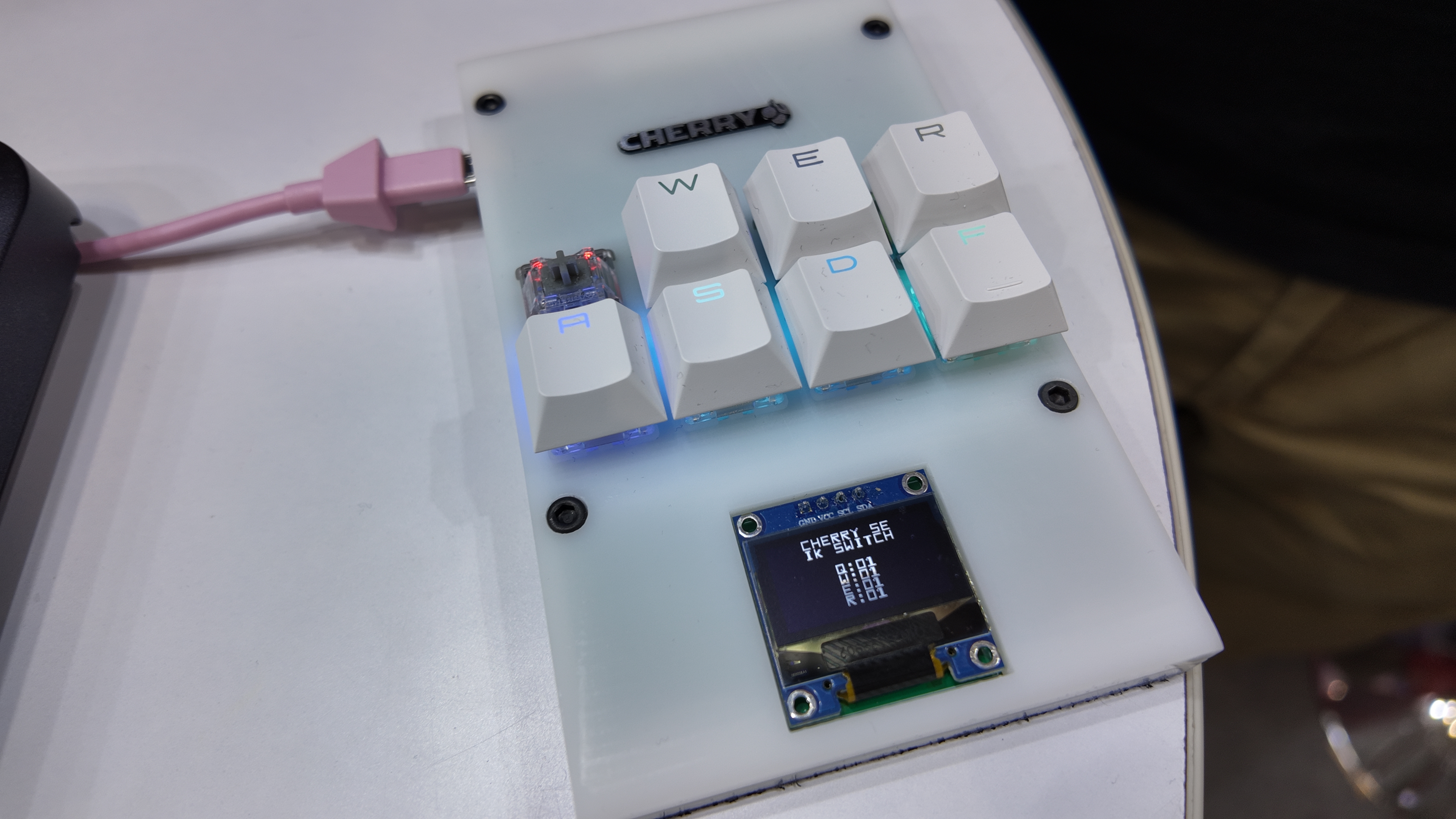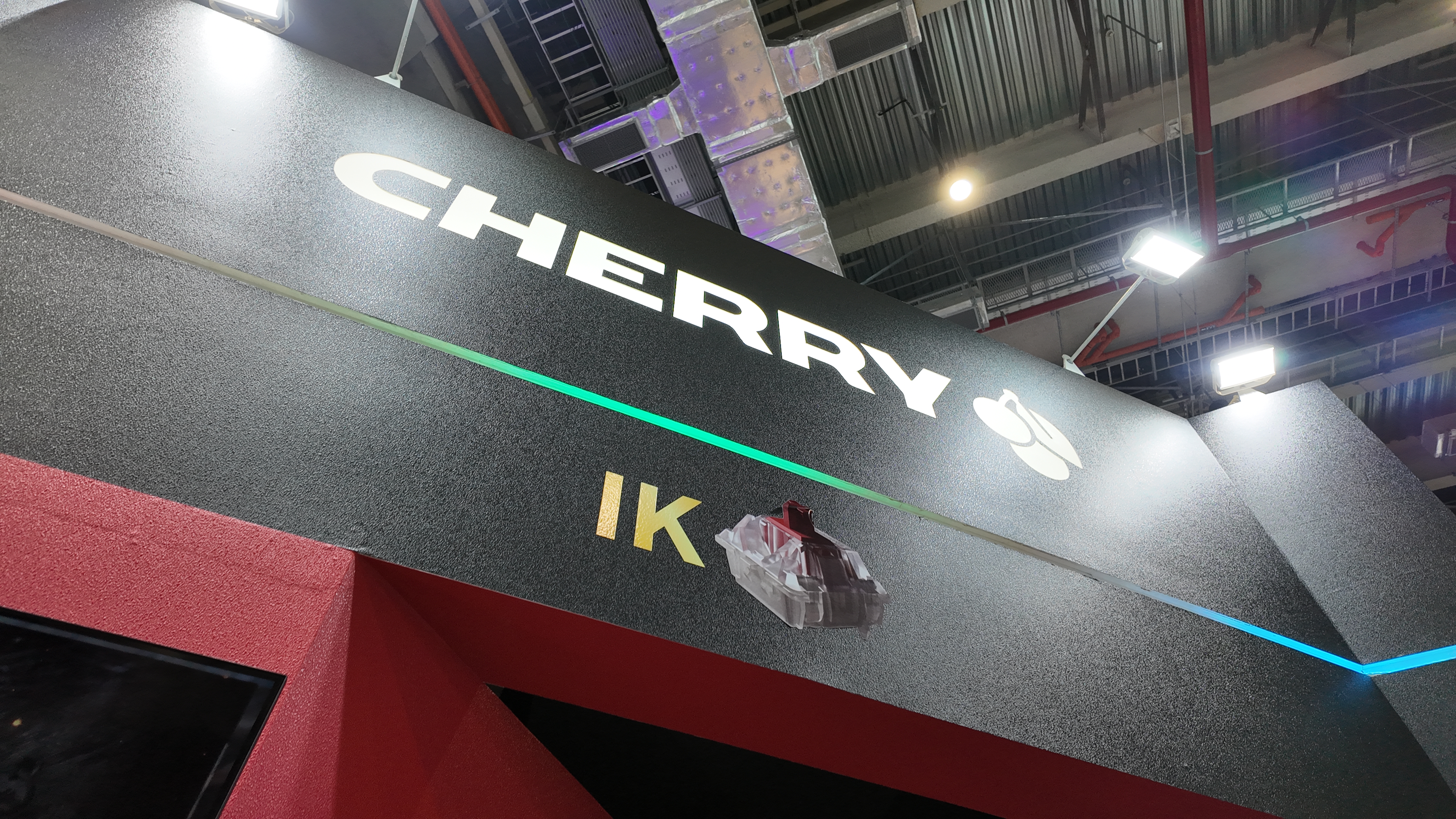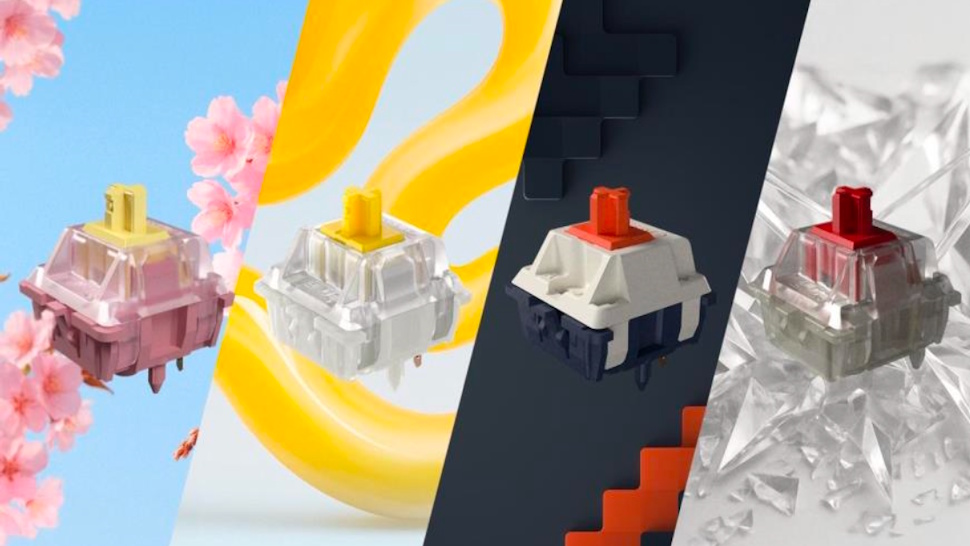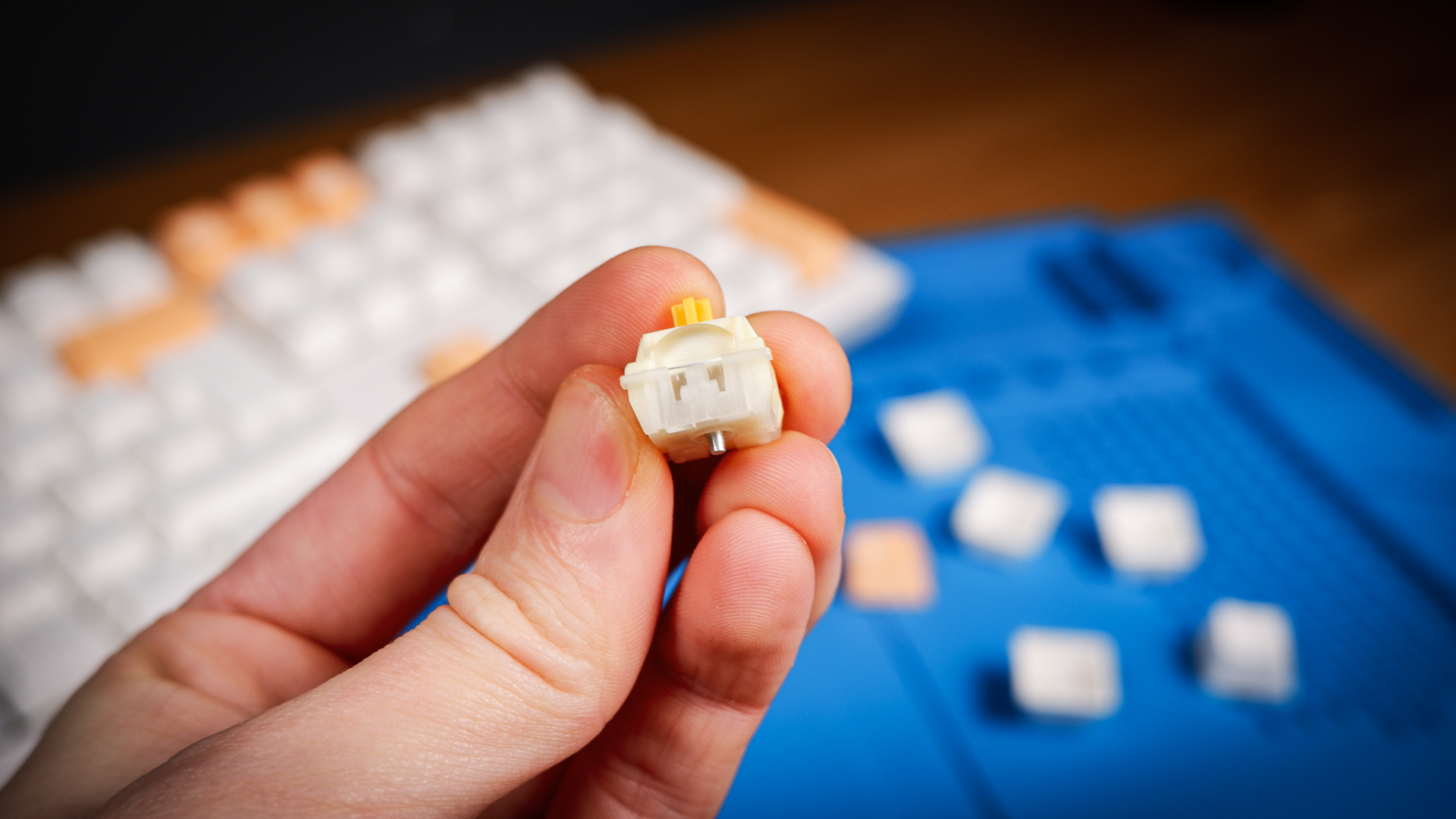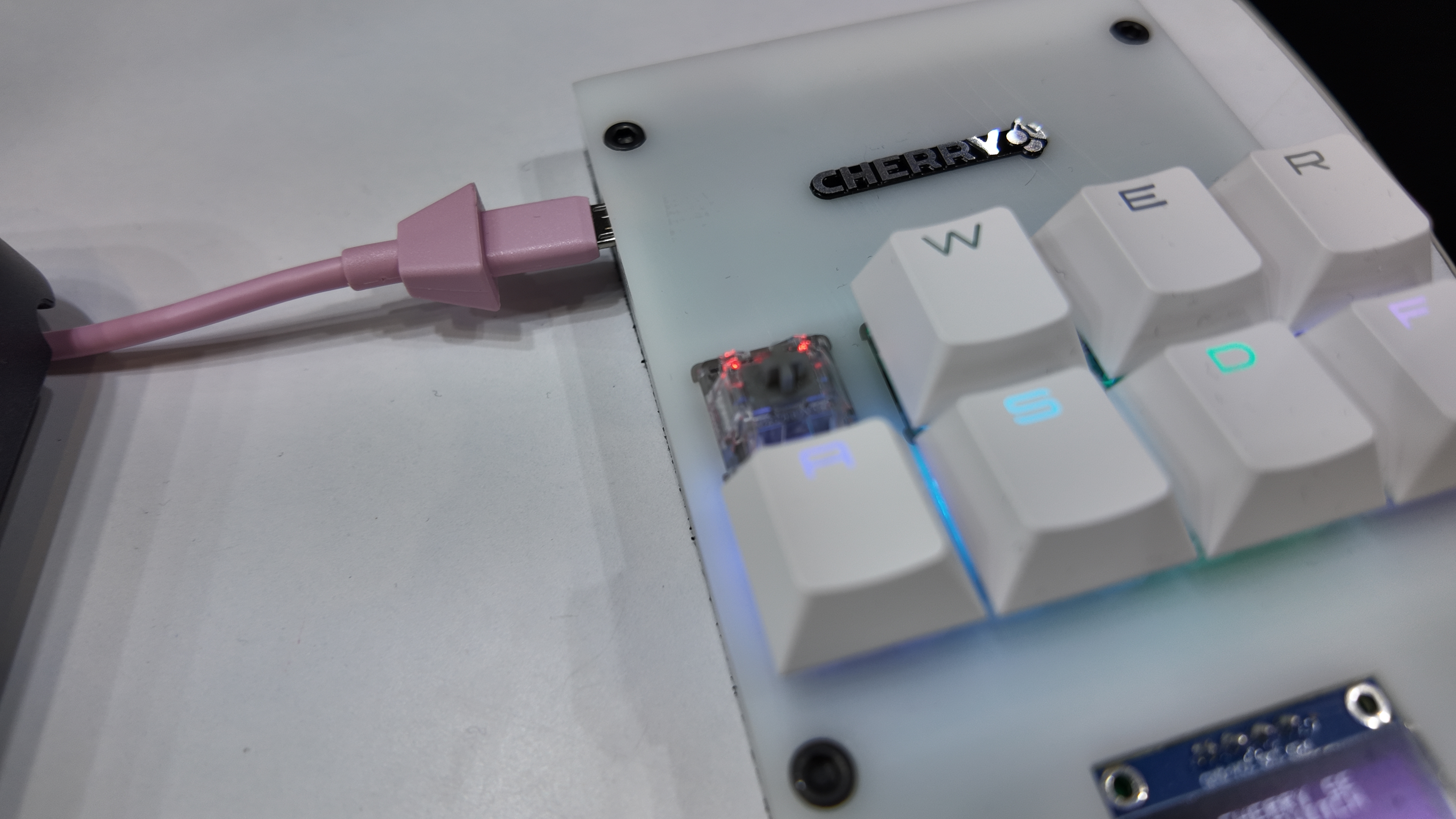
Though whether it gets used for analog gaming keyboards is up to keyboard makers—Cherry says it is aiming at the mass market.
When you think of Cherry, you think of the Cherry MX switch or the fruit. I’m talking about the former today, as the company behind the world’s most renowned mechanical switch tells me it’s in a ‘new era’ with its latest, the Cherry IK. Move aside, mechanical.
Cherry IK are analogue induction switches and, speaking to Gunnar Schreck, Cherry global product manager, at Computex 2025, I’m told they’re more reliable, flexible, and somehow cheaper to manufacture than mechanical.
“So if you have a TMR or the old generation Hall effect switches, you need a sensor to read out the signal. And these sensors make those solutions very expensive,” says Cherry’s Schreck.
“So our technology works without the sensor.”
How does that work? I’m way ahead of you, asking Schreck exactly that moments later.
“It uses a very basic electronic component, which is called a comparator. And with this, basically all the workload is done by the MCU [microcontroller] on the keyboard, and that drives the cost massively down to a level where the switch is even cheaper than our MX switch.”
That means no magnet, only metal, and makes for a “contactless” actuation.
Cherry’s MX switch is a well-known entity in the gaming and wider keyboard industry, and no doubt the economies of scale are working tremendously in Cherry’s favour after many years of making absolutely heaps of them, which is why this cost analysis for IK is hella surprising. But there’s more to these switches than cost savings, Schreck says.
These switches also have a “higher lifetime, because you don’t have the abrasion on the mechanical contact system anymore. It feels better because when a mechanical switch is pressed, the contact system is pressing sidewards against the stem when it goes down, so that is gone now.
“We’re also more free in which materials we want to use. Why? Because the MX needed to be heat resistant for the soldering process.”
One material that could be used for a smoother switch is POM, or Polyoxymethylene, Schreck says, which wasn’t possible on traditional mechanical switches due to heat.
Cherry is aiming at the mass market with IK. That’s not instead of the enthusiast/gaming segments, but that’s also not really the target here. If these really are as cheap as Cherry says, we could see membrane office keyboards finally kick the bucket in favour of less pricey induction boards, which would be a pretty massive improvement. Though I suspect membrane will stick around like a cockroach after the apocalypse.
As for gaming on IK, Cherry didn’t totally rule it out, it’s just not focusing too much on that market. It all comes down to making the MCU powerful enough to make gaming features like rapid trigger and fully analogue actuation possible.
I asked Schreck whether rapid trigger or analogue features, such as those found on a Wooting 80HE or NZXT Function Elite (to name a few), would be possible with IK. Here’s what he said:
“In terms of performance, it’s now up to you [keyboard manufacturers] to choose which MCU you want to use in your keyboard. The higher the processing power of the MCU, maybe you could do more of that stuff. The switch itself is dumb. The switch doesn’t care so much.”
It’s worth noting that Cherry has also announced a new MK Series of magnetic switches that are actually designed for gaming, and likely more of a match for existing Hall effect switches. And some more mechanical switches, so those aren’t dead yet. So there are other options—tried and tested options that work very well—but Cherry seemed very excited by what inductive switches could deliver overall.
“We at Cherry say, after 30 years of MX, this is the old era. Our combustion engine. This [IK] is the new era.”
No wonder, really, considering these are reportedly half the cost to make versus mechanical switches, which I still cannot really get my head around. How much of that cost will need to go back into the PCB and MCU to actually use these switches isn’t entirely clear yet, but clearly there will be an associated cost for beefing up the MCU for any truly analogue features, beyond reliability and feel.
One thing I had to ask Cherry while I had them was whatever happened to its first wave of induction switches, MX Multipoint, which were announced and displayed at Computex 2024, as a part of Ducky’s booth, then swiftly disappeared from the scene. Later in that same year, Ducky released a keyboard with induction switches, but these were notably not Cherry’s MX Multipoint switches, but Ducky’s own. You can read more about those in my Ducky One X review.
Catch up with Computex 2025: We’re stalking the halls of Taiwan’s biggest tech show once again to see what Nvidia, AMD, Intel, Asus, Gigabyte, MSI and more have to offer.
“The first switch we did relied on a very specific sensor, which made the whole solution pretty expensive. Also, the results of the switch, like where the earliest actuation point is, were not so impressive. So this has been improved a lot by the new design.”
“We have a much, much better response curve on the [IK] switch, and more precision, and much earlier activation.”
It all sounds quite promising for better, longer-lasting switches on many keyboards. I do hope Cherry sticks it out with this lot. It’ll be something to watch in the gaming space too, if a manufacturer tries to take advantage of these benefits for any gaming board, but it definitely sounds like we’ll be sticking with Hall effect for the time being.
I also spoke to Wooting at Computex, the company being the first to popularise analogue gaming keyboards, and it said the same thing: it’s sticking with Hall effect for now. There’s no rush to hop onto the next new thing for gaming, then, but someone is sure to try.
Cherry is keen to hop on the new thing regardless: Cherry IK comes out “Fall 2025”.
